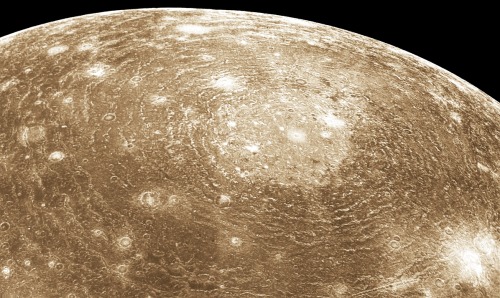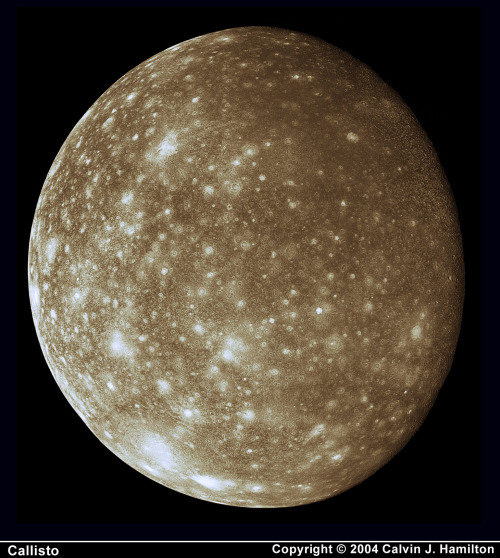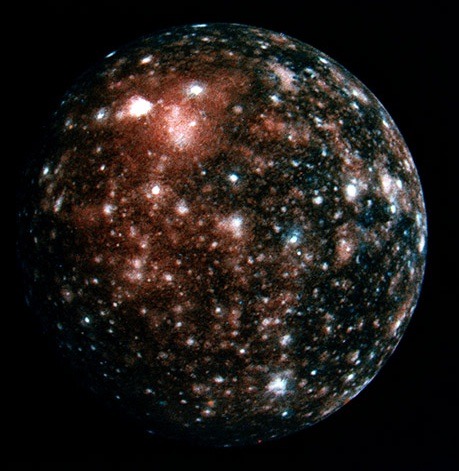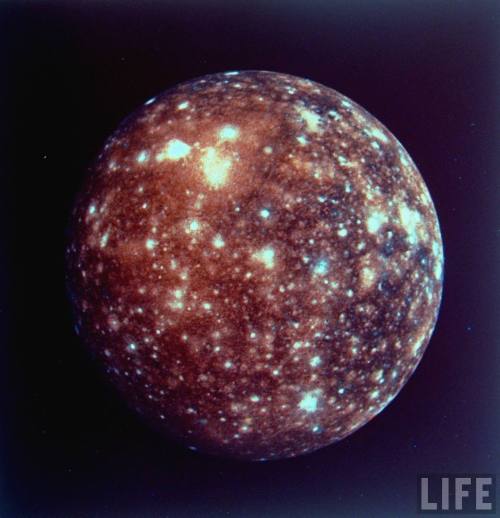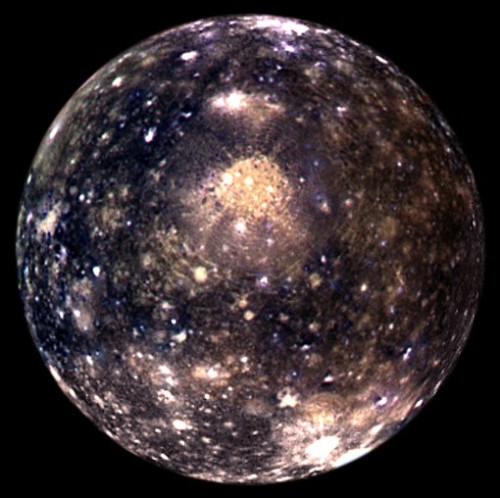On This Date In 1902, Greek Archaeologist Valerios Stais Sifted Through Some Artifacts From A Shipwreck


On this date in 1902, Greek archaeologist Valerios Stais sifted through some artifacts from a shipwreck at Antikythera. The wrecked Roman cargo ship was discovered two years earlier, but Stais was the first to notice an intriguing bit of bronze among the treasures. It looked like it might be a gear or wheel. That corroded chunk of metal turned out to be part of the Antikythera Mechanism, an ancient analog astronomical computer.
The Antikythera Mechanism tracked planetary positions, predicted lunar and solar eclipses, and even signaled the next Olympic Games. It was probably also used for mapping and navigation. A dial on the front combines zodiacal and solar calendars, while dials on the back capture celestial cycles. Computer models based on 3-D tomography have revealed more than 30 sophisticated gears, housed in a wooden and bronze case the size of a shoebox.
More Posts from Fillthevoid-with-space and Others

Earth is a super special world. It has life on it, and getting conditions just right so that life will survive is an incredibly difficult task. Other planets and other moons in our solar system may look like they could have life on them, but it just didn’t happen.
Life on other planets is for a different episode, though. In this one, I’m talking about what we can see on our close neighbors, the eight (maybe seven?) planets in our solar system. Learn how they were discovered, what naming conventions we use for them and their moons, how to differentiate between them, and what probes we’ve sent out to learn more about them. Also enjoy snippets from the lovely orchestral suite written for each planet by Gustav Holst! It’s the longest episode so far but I promise it’s worth it.
There’s a timeline below the cut in addition to the other resources because hooboy did I mention a lot of people. I may also put together a timeline of probes... But that’s for another podcast. Maybe the next podcast! Let me know what you think I should research by messaging me here, tweeting at me at @HDandtheVoid, or asking me to my face if you know me in real life. And please check out the podcast on iTunes, rate it or review it if you’d like, subscribe, and maybe tell your friends about it if you think they’d like to listen! Also below the cut are my sources, music credits, vocab list, and the transcript. I mention a book, a play, a poem, and a few works of art, and I quote an astronomy book in this episode so if you want to see that written down, those sources are there as well.
(My thoughts for the next episode were spectroscopy, auroras, or probes through the ages. Let me know by the 21st and I’ll have the next podcast up by July 31!)
Glossary:
auroras - a light display that occurs when a magnetosphere is sufficiently disturbed by solar wind that charged particles scatter into the upper atmosphere and lose their energy.
magnetosphere - an invisible barrier that surrounds a celestial objet. It is often generated by the movement of the liquid metal core of the object. Around a planet, it deflects high-energy, charged particles called cosmic rays that can either come from the Sun or, less often, from interstellar space.
prograde - when a planet spins from east to west.
retrograde - when a planet spins from west to east.
sol - a unit of time measuring one Martian day, or 24 Earth-hours and 40 Earth-minutes. The immediately previous Martian day is called yestersol.
transit of Mercury/Venus - when a planet passes in front of the Sun.
Script/Transcript
Timeline of people mentioned
Nicolaus Copernicus, Polish (1473-1543)
Tycho Brahe, Danish (1541-1601)
Galileo Galilei, Italian (1564-1642)
Johannes Kepler, German (1571-1630)
Simon Marius, German (1573-1625)
Pierre Gassendi, French (1592-1655)
Giovanni Cassini (also known as Jean-Dominique Cassini), Italian/French (1625-1712)
Christiaan Huygens, Dutch (1629-1695)
William Herschel, German/English (1738-1822)
Johann Elert Bode, German (1747-1826)
Caroline Herschel, German/English (1750-1848)
Johann Franz Encke, German (1791-1865)
John Herschel, English (1792-1871)
William Lassell, English (1799-1880)
Urbain Le Verrier, French (1811-1877)
Johann Galle, German (1812-1910)
John Couch Adams, English (1819-1892)
Edouard Roche, French (1820-1883)
Heinrich Louis d’Arrest, German (1822-1875)
Asaph Hall III, American (1829-1907)
James Clark Maxwell, Scottish (1831-1879)
Giovanni Schiaparelli, Italian (1835-1910)
Percival Lowell, American (1855-1916)
Eugène Antoniadi (also known as Eugenios Antoniadis), Greek (1870-1944)
Gerard Kuiper, Dutch/American (1905-1973)
Clyde Tombaugh (1906-1997)
Sources:
Who discovered each planet via Cornell University
The mathematical discovery of Neptune and Pluto via University of St. Andrews, where my mom’s boyfriend’s son graduated last year! Mad props, Henry!
Holst’s The Planets via the Utah Symphony
More on Holst’s suite, including music files
Chronology of solar system discovery
MESSENGER information via John Hopkins University Applied Physics Laboratory
Auroras via NASA’s Themis mission
Magnetospheres via NASA, which has a tumblr! You should follow it! Good stuff.
Curiosity rover via NASA
‘Canali on Mars’ debacle via NASA
Mariner 9 via NASA
Origin of ‘yestersol’ and Martian day-length via A Way With Words
Richard Bram: “Superlatives are inadequate; words fail. Look. Think. Be in awe.”
Images of Mars through the years via The Telegraph
Mars-One mission to colonize Mars
Names of all the planet’s moons and their significance in mythology, last updated in 2013 and questionably reliable but from what I know of mythology—and I do know more than most—it’s not too far off.
Table of moons of various planets
Jupiter via NASA
Jupiter moon name facts via NASA
The Galilean Moons of Jupiter via University of Colorado at Boulder
Saturn’s moons via Phys.org
Cassini mission website
Saturn overview via NASA
Saturn’s moon Titan via NASA
Ethane via PubChem
Methane via EPA
Neptune’s moons via Space.com
What is Pluto via NASA
Pluto Overview via NASA
“Dwarf planets may provide the best evidence about the origins of our solar system.”
New Horizons mission via NASA
Pluto and our designations for planets are mentioned very briefly in this Oatmeal comic. I liked it.
Sobel, Dava. The Planets. Viking: NY, 2005.
“But tides raised by the Sun in the planet’s molten middle gradually damped Mercury’s rotation down to its present slow gait” (34).
“Light and heat always hit Mercury dead on, while the north and south poles, which receive no direct sunlight, remain relatively frigid at all times” (35).
“Venusian clouds comprise large and small droplets of real vitriol—sulfuric acid along with caustic compounds of chlorine and fluorine. They precipitate a constant acid rain, called virga, that evaporates in Venus’ hot, arid air before it has a chance to strike the ground” (61).
“…Neptune, where the voices of a female choir, sequestered in a room offstage, are made to fade out at the finale (with no sacrifice in pitch) by the slow, silent closing of a door” (165).
Holst: “Saturn brings not only physical decay but also a vision of fulfillment” (165).
“They occupy a nearby region of perpetual fragmentation known as the Roche zone, named for the nineteenth-century French astronomer Edouard Roche, who formulated the safe distances for planetary satellites” (172).
“It's near twin, Neptune, reveals a more complex beauty in subtle stripes and spots of royal to navy blue, azure, turquoise, and aquamarine” (200).
“This outlying population offered Pluto a new identity—if not the last planet, then the first citizen of a distant teeming shore” (214).
Van Gogh, Vincent. Starry Night (June 1889).
—. Road with Cypress and Star (May 1890).
—. White House at Night (June 1890).
Shakespeare, William. A Midsummer Night’s Dream (1605).
Pope, Alexander. “The Rape of the Lock” (1712). (It’s a mock-epic satiric poem about stealing a lock of hair, not physical rape)
Duane, Diane. Wizards at War. Harcourt Trade Publishers: San Diego CA, 2005.
Intro Music: ‘Better Times Will Come’ by No Luck Club off their album Prosperity
Filler Music: The Planets (1918) by Gustav Holst, performed by the London Symphony Orchestra in 2003.
Outro Music: ‘Fields of Russia’ by Mutefish off their album On Draught

No matter where you hang your stockings, I wish you a very Merry Christmas!
I talked about spaghettification but someone did one better and made a dang cute comic about it!






Starry Greetings!
This week’s comic: Spaghettification
https://www.youtube.com/watch?v=OGn_w-3pjMc
http://science.howstuffworks.com/science-vs-myth/what-if/what-if-fell-into-black-hole2.htm

The 10-billion-year life cycle of the Sun, illustrated by David Meltzer for National Geographic, May 1974.
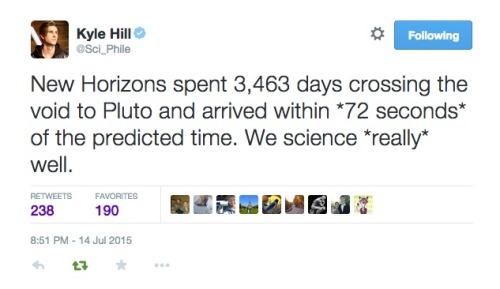
Its pretty incredible how accurate the science of astrophysics has gotten. New Horizons actually arrived 72 seconds early after travelling for almost 10 years straight to its destination.

New Zealand was lovely, but I already touched on what I’d be tempted to talk about with my Southern Stars episode. A person I interviewed as a potential new housemate gave me the idea for this episode because the joy of outer space is truly everywhere and anywhere. The field of astrogeology was not something I had heard of before, though I had indirectly heard of Eugene Shoemaker. I knew the comet Shoemaker-Levy 9 was named after him (and Carolyn Shoemaker, his wife). It turns out he basically founded the modern field of astrogeology! So I talk about him for quite a while, too.
Below the cut are the glossary, transcript, sources, and music credits. Send me any topic suggestions via Tumblr message (you don’t need an account to do this, just submit as anonymous). You can also tweet at me on Twitter at @HDandtheVoid, or you can ask me to my face if you know me in real life. Subscribe on iTunes to get the new episodes of my semi-monthly podcast, and please please please rate and review it. Go ahead and tell friends if you think they’d like to hear it, too!
(The next episode is definitely going to be on famous comets, and I’m hoping to publish that episode in May.)
Glossary
active galaxy - a galaxy with a small core of emission embedded at the center. This core is typically very variable and very bright compared to the rest of the galaxy. These galaxies emit much more energy than they should; this excess energy is found in the infrared, radio, UV, and X-ray regions of the electromagnetic spectrum.
black hole - a region of spacetime where a great deal of mass and energy have been compressed into a relatively small space. Black holes exert such strong gravitational effects that no mass or energy, not even light, can escape from inside them. There are supermassive black holes in galaxies that contribute to the development and life cycle of galaxies.
blazar - a subcategory of active galaxy, it is an extremely bright, distant object, powered by a black hole, which emits massive amounts of energy. It is distinct from a quasar because it is even brighter.
interferometry - a group of techniques to extract information from superimposing electromagnetic waves to create interference. In radio astronomy, this is done by using a wide spread of receivers to look at the same distant object, then bringing that data together with a correlator that can create a larger, clearer picture than an individual radio telescope alone could.
Messier object - a deep-sky object included on a list of 103-110 deep-sky objects made by Charles Messier and his colleagues in the 18th century in an attempt to prevent fuzzy, bright objects from being confused with comets.
torus - a donut shape.
quasar - a distant, massive celestial object that emits extremely large amounts of energy. These star-like objects may reflect a stage in the evolution of some galaxies.
Script/Transcript
Sources
Black Holes, explained via National Geographic
What Is a Black Hole? via NASA
Black Holes via NASA
Black Hole via Swinburne University of Technology
Darkness Visible, Finally: Astronomers Capture First Ever Image of a Black Hole via the New York Times (April 2019)
Event Horizon Telescope
Astronomers Capture First Image of a Black Hole via ESO (April 2019)
How They Took the First Picture of a Black Hole via New York Times (April 2019)
Intro Music: ‘Better Times Will Come’ by No Luck Club off their album Prosperity
Filler Music: ‘Flame On Flame (A Slow Dirge)’ by Kishi Bashi off his album Sonderlust
Outro Music: ‘Fields of Russia’ by Mutefish off their album On Draught
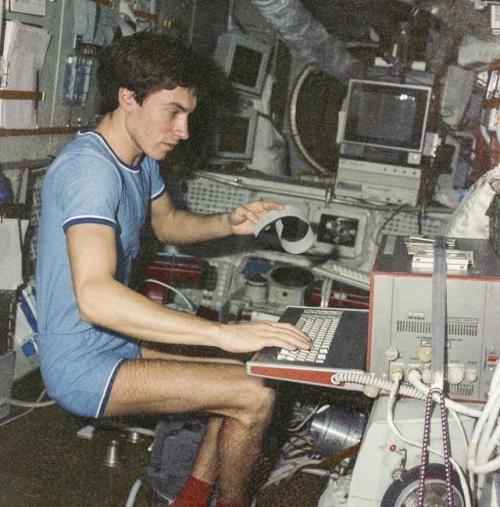
Soviet Cosmonaut Sergei Krikalev stuck in space during the collapse of the Soviet Union in 1991
Unable to return home, he ended up having to stay in space until further notice.
The cosmonaut eventually returned back to earth on March 25, 1992, after 10 months in orbit - to a nation that was very different to what it was when he had left. The Soviet Union had fractured into 15 nations, presidents had changed, and even his hometown of Leningrad had become St. Petersburg.
Interestingly, at the time, Krikalev was supposed to serve in the military reserves, and was almost issued a warrant for desertion – before the army realised that their reserve soldier was not even on the planet.
Here’s the nose scratching sponge I talked about in Episode 19!

This is how astronauts clear our ears (and scratch our noses!) during a spacewalk.
-
 yupraxia liked this · 5 years ago
yupraxia liked this · 5 years ago -
 ancienttimes reblogged this · 5 years ago
ancienttimes reblogged this · 5 years ago -
 catso969 liked this · 5 years ago
catso969 liked this · 5 years ago -
 fourthdimentionalflattening reblogged this · 5 years ago
fourthdimentionalflattening reblogged this · 5 years ago -
 motknar liked this · 5 years ago
motknar liked this · 5 years ago -
 bae-route liked this · 6 years ago
bae-route liked this · 6 years ago -
 transjudas liked this · 6 years ago
transjudas liked this · 6 years ago -
 theloveyourselfdragon liked this · 6 years ago
theloveyourselfdragon liked this · 6 years ago -
 senefra liked this · 6 years ago
senefra liked this · 6 years ago -
 conceivablyanyone liked this · 6 years ago
conceivablyanyone liked this · 6 years ago -
 machinamuros reblogged this · 6 years ago
machinamuros reblogged this · 6 years ago -
 machinamuros liked this · 6 years ago
machinamuros liked this · 6 years ago -
 lutefisk-kingdom liked this · 7 years ago
lutefisk-kingdom liked this · 7 years ago -
 mrmegamanfan reblogged this · 7 years ago
mrmegamanfan reblogged this · 7 years ago -
 mrmegamanfan liked this · 7 years ago
mrmegamanfan liked this · 7 years ago -
 localgoththot liked this · 7 years ago
localgoththot liked this · 7 years ago -
 videoboy reblogged this · 7 years ago
videoboy reblogged this · 7 years ago -
 videoboy liked this · 7 years ago
videoboy liked this · 7 years ago -
 pinaymermaid reblogged this · 7 years ago
pinaymermaid reblogged this · 7 years ago -
 idolisme reblogged this · 7 years ago
idolisme reblogged this · 7 years ago -
 macktheiceman reblogged this · 7 years ago
macktheiceman reblogged this · 7 years ago -
 ripopentheuniverse reblogged this · 7 years ago
ripopentheuniverse reblogged this · 7 years ago -
 lurkershadow reblogged this · 7 years ago
lurkershadow reblogged this · 7 years ago -
 nathangoblinpirate liked this · 7 years ago
nathangoblinpirate liked this · 7 years ago -
 argentnoelle liked this · 7 years ago
argentnoelle liked this · 7 years ago -
 starfata liked this · 7 years ago
starfata liked this · 7 years ago -
 darkpuck reblogged this · 7 years ago
darkpuck reblogged this · 7 years ago -
 shadowsong26x reblogged this · 7 years ago
shadowsong26x reblogged this · 7 years ago -
 tigerkat24 reblogged this · 7 years ago
tigerkat24 reblogged this · 7 years ago -
 pumpkinpieeatyoface reblogged this · 7 years ago
pumpkinpieeatyoface reblogged this · 7 years ago -
 arkatrine liked this · 7 years ago
arkatrine liked this · 7 years ago -
 holy-muffins reblogged this · 7 years ago
holy-muffins reblogged this · 7 years ago -
 riahchan liked this · 7 years ago
riahchan liked this · 7 years ago -
 zip001 reblogged this · 7 years ago
zip001 reblogged this · 7 years ago -
 zip001 liked this · 7 years ago
zip001 liked this · 7 years ago -
 bluecichlid reblogged this · 7 years ago
bluecichlid reblogged this · 7 years ago -
 carpe-mamilia reblogged this · 7 years ago
carpe-mamilia reblogged this · 7 years ago -
 backasswords reblogged this · 7 years ago
backasswords reblogged this · 7 years ago -
 mooseman13579 reblogged this · 7 years ago
mooseman13579 reblogged this · 7 years ago -
 jmarie0621itsme liked this · 7 years ago
jmarie0621itsme liked this · 7 years ago -
 consonantscollide liked this · 7 years ago
consonantscollide liked this · 7 years ago -
 hiawathab reblogged this · 7 years ago
hiawathab reblogged this · 7 years ago -
 kaching reblogged this · 7 years ago
kaching reblogged this · 7 years ago -
 immerwulf liked this · 7 years ago
immerwulf liked this · 7 years ago
A podcast project to fill the space in my heart and my time that used to be filled with academic research. In 2018, that space gets filled with... MORE SPACE! Cheerfully researched, painstakingly edited, informal as hell, definitely worth everyone's time.
243 posts
